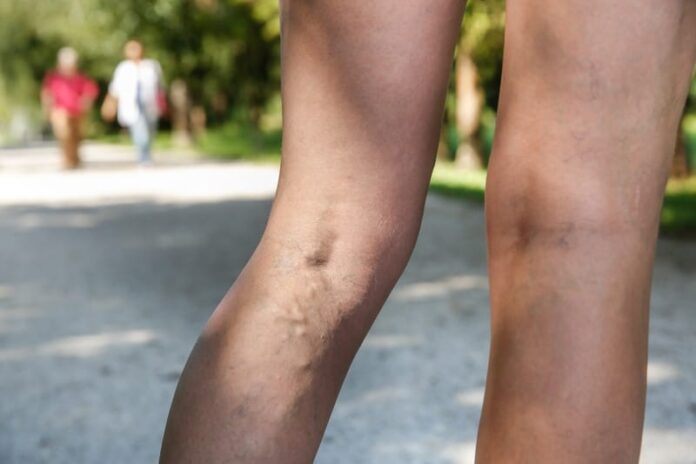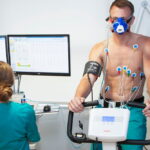Varicose veins are a prevalent condition characterized by enlarged, twisted veins, primarily affecting the legs. They can cause pain and aesthetic concerns for people who have them. While varicose veins may not always be preventable, various strategies can help manage the pain. This article will provide valuable tips to alleviate the symptoms and improve well-being.
Causes of Varicose Veins
Varicose veins are a prevalent vascular condition that affects millions of people worldwide. They occur when the valves within the veins become damaged, leading to blood pooling and vein enlargement. It is unclear what causes varicose veins in particular, but certain factors increase the risk of developing this condition, like:
– Genetic factors
– Age and gender
– Pregnancy
– Obesity
– Sedentary lifestyle
Symptoms of Varicose Veins
Varicose veins can cause a range of symptoms that vary in severity from person to person. Common symptoms include:
– Visible, twisted veins
– Pain and discomfort
– Swelling and heaviness in the legs
– Skin changes and ulcers
When to Seek Medical Help
It is advisable to consult a vein doctor, like Port Charlotte vein specialist, if you experience any of the following situations:
– Worsening symptoms. If your varicose veins become increasingly painful, swollen, or begin to bleed.
– Development of complications. If you observe skin changes, such as ulcers, dermatitis, or infection.
– Impact on daily life and activities. If varicose veins significantly affect your quality of life, work, or physical activities.
Lifestyle Changes for Managing Varicose Veins
In addition to medical interventions, specific lifestyle changes can significantly improve the management of varicose veins. Consider incorporating the following practices into your daily routine:
1. Regular exercise and physical activity
Engage in low-impact exercises to promote blood circulation and strengthen leg muscles. You can try walking, swimming, or cycling.
2. Maintaining a healthy weight
Shedding excess pounds can alleviate pressure on the veins and reduce symptoms.
3. Avoiding prolonged sitting or standing
Take breaks and change positions frequently to prevent blood from pooling in the veins.
4. Elevating the legs
Prop up your legs on a pillow or cushion while resting to facilitate blood flow back to the heart.
Dietary Recommendations
A healthy diet can significantly help in managing varicose veins. Consider the following dietary recommendations:
1. Foods that promote healthy circulation
Incorporate foods rich in antioxidants like vegetables, fruits, and whole grains into your diet.
2. Importance of hydration
Drink adequate water throughout the day to maintain optimal blood viscosity.
3. Avoiding excessive salt intake
High sodium consumption can lead to fluid retention, exacerbating swelling and discomfort associated with varicose veins.
Self-Care Techniques
Self-care techniques, in combination with lifestyle changes and dietary adjustments, can relieve discomfort caused by varicose veins. Try the following methods:
1. Taking breaks and stretching
Avoid long periods of sitting or standing by taking short breaks to stretch and move your legs.
2. Leg elevation exercises
Lie on your back and raise your legs to a 45-degree angle for 15 minutes. Try this exercise several times a day to promote blood flow.
3. Massaging the legs
Gently massage the affected areas, using upward strokes towards the heart. These movements stimulate circulation and avoid swelling.
4. Cold and warm compresses
Apply cold compresses to reduce swelling and warm compresses to alleviate pain and relax the muscles.
Home Remedies and Alternative Therapies
Several home remedies and alternative therapies may provide additional relief for varicose veins. Consider the following options:
1. Herbal remedies and supplements
Certain herbs, such as grape seed extract, can potentially improve vein health. Consult with a vein doctor before trying any herbal remedies or supplements.
2. Essential oils
Massaging the legs with essential oils, such as lavender or chamomile, can help reduce pain and inflammation.
3. Acupuncture and acupressure
These ancient techniques stimulate specific points in the body. They promote better blood circulation and pain relief.
Conclusion
Managing pain and discomfort from varicose veins involves a multi-faceted approach that includes lifestyle changes and medical interventions. Adopting the tips outlined in this article can effectively alleviate symptoms and improve your overall well-being.
Read Also
- Why comprehensive health insurance with maternity is beneficial in the UAEWelcoming a child is a significant milestone in any family’s journey. As exciting as this chapter is, it also brings with it a fair share of responsibilities—especially when it comes to planning for healthcare costs. Health insurance is now mandatory in the UAE, but as with any type of insurance, the smallest requirement might not… Read more: Why comprehensive health insurance with maternity is beneficial in the UAE
- Modern Approaches to Adolescent Mental Health Treatment for Lasting RecoveryWith increasing numbers of teens experiencing emotional and behavioral health concerns, adolescent mental health treatment has become more essential than ever. Conditions such as anxiety, depression, trauma and mood instability are on the rise, and effective support must evolve with these growing needs. Today’s treatment models blend evidence-based therapy with flexible access and holistic care, giving… Read more: Modern Approaches to Adolescent Mental Health Treatment for Lasting Recovery
- How to Find a 5-Star Dentist Near YouChoosing a dentist is more than just finding someone who can clean your teeth. It’s about selecting a trusted partner in your long-term oral health. A 5-star dentist not only provides excellent clinical care but also delivers a positive patient experience, from the moment you walk in until the moment you leave. Whether you’re new… Read more: How to Find a 5-Star Dentist Near You
- Your Easy-Peasy Guide to Brewing Amazing MatchaHey there! So, you’ve heard all the buzz about matcha – that vibrant green powder that’s not just pretty but packed with good stuff? It can seem a little fancy and intimidating at first, but trust me, making a delicious cup at home is simpler than you think. Forget complicated ceremonies for now; let’s just… Read more: Your Easy-Peasy Guide to Brewing Amazing Matcha
- Embracing Holistic Wellness: Insights from a Lansing, MI Health CenterReframing Health: Moving Beyond Symptom Management Treating only symptoms often offers quick relief, yet long-term results stay out of reach. When care zeroes in on isolated complaints, the bigger picture, such as stress, behavior, or lifestyle, often gets missed. Research shows that whole-person care, which looks at physical, emotional, and environmental factors, yields better outcomes… Read more: Embracing Holistic Wellness: Insights from a Lansing, MI Health Center
- VO₂ Max Testing Explained: What It Is & Why It Matters for Your HealthVO₂ max sounds like a term reserved for elite athletes, but it’s among the most accurate measures of your lifetime and general condition. Moreover, it goes beyond performance. Monitoring your VO₂ max will help you to ascertain your body’s capacity to control stress, its oxygen consumption efficiency, and your internal ageing process. If you have… Read more: VO₂ Max Testing Explained: What It Is & Why It Matters for Your Health







